 To enhance service speed and avoid tariff delays, we've opened a US warehouse. All US orders ship directly from our US facility.
To enhance service speed and avoid tariff delays, we've opened a US warehouse. All US orders ship directly from our US facility.
| Cat. No. | Product Name | Field of Application | Chemical Structure |
|---|---|---|---|
| DC67373 | BRD4 degrader-2 Featured |
BRD4 degrader-2 (Compound JP-2-197) is a covalent monovalent molecular glue that orchestrates targeted BRD4 degradation through ternary complex formation with the E3 ligase RNF126. This compound selectively engages both BRD4 isoforms (long and short) for proteasomal elimination, demonstrating pan-isoform degradation capability in cellular systems.
More description
|
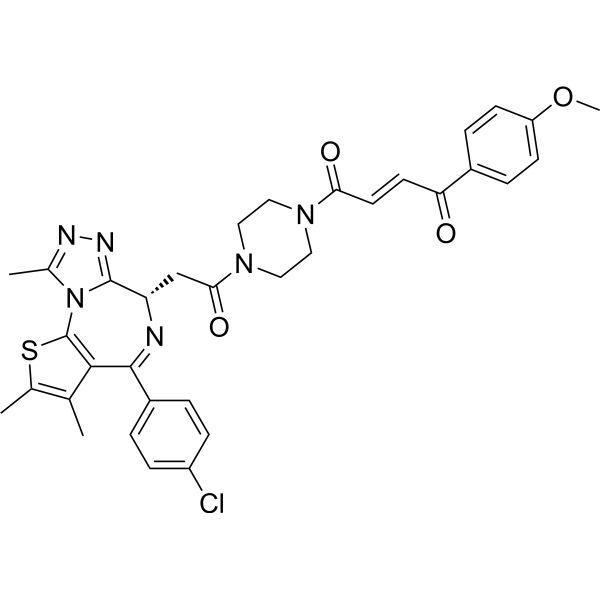
|
| DC67372 | 3-Indoleacetic acid (standard) Featured |
3-Indoleacetic acid (Standard) serves as an analytically validated reference material for the phytohormone indole-3-acetic acid (IAA). Designed for precision research applications, this auxin-class plant growth regulator modulates fundamental developmental processes including cellular expansion, tissue differentiation, and organ morphogenesis, driving vegetative growth in plant systems.
More description
|
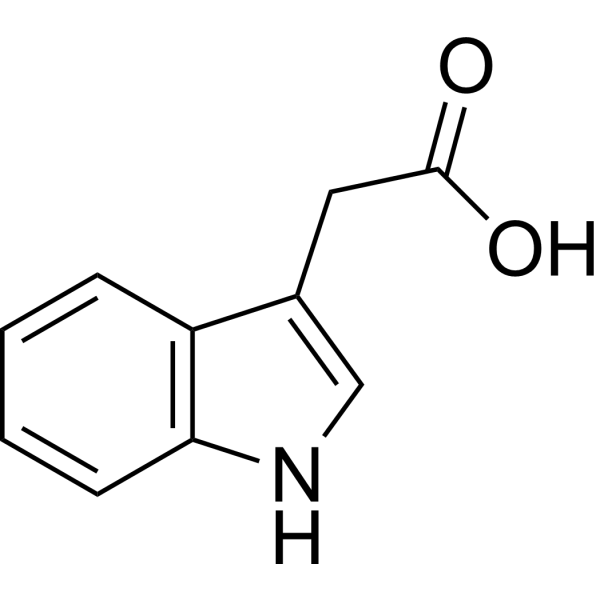
|
| DC67371 | ChREBPα/14-3-3 regulator-1 Featured |
ChREBPα/14-3-3 regulator-1 (Compound 43) is a selective molecular glue that stabilizes the ChREBP/14-3-3 protein complex with an EC50 of 3.8 μM. By enhancing this interaction, the compound demonstrates cytoprotective effects against glucolipotoxicity in pancreatic β cells while preserving cellular function. These properties position it as a promising investigational tool for type 2 diabetes research.
More description
|
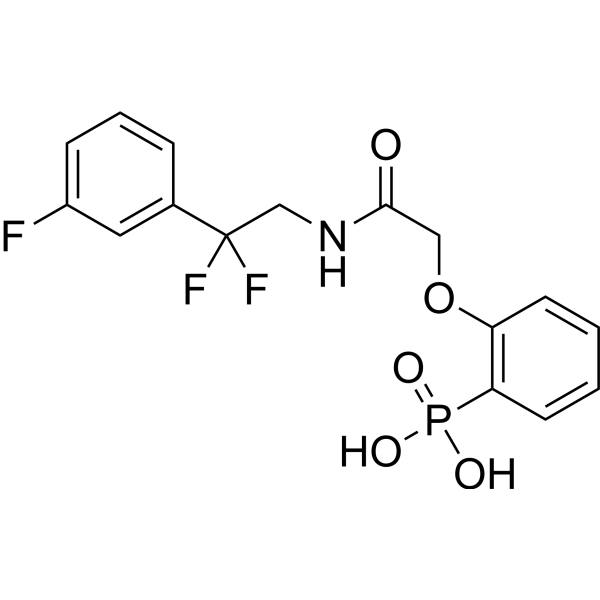
|
| DC67370 | BRD9 Degrader-2 Featured |
BRD9 Degrader-2 (Compound B11) is a highly potent and efficient molecular degrader of BRD9, achieving sub-nanomolar degradation activity (DC50 ≤1.25 nM) with maximal degradation exceeding 75%. This compound represents a promising chemical tool for investigating BRD9-dependent oncogenic pathways in cancer research.
More description
|
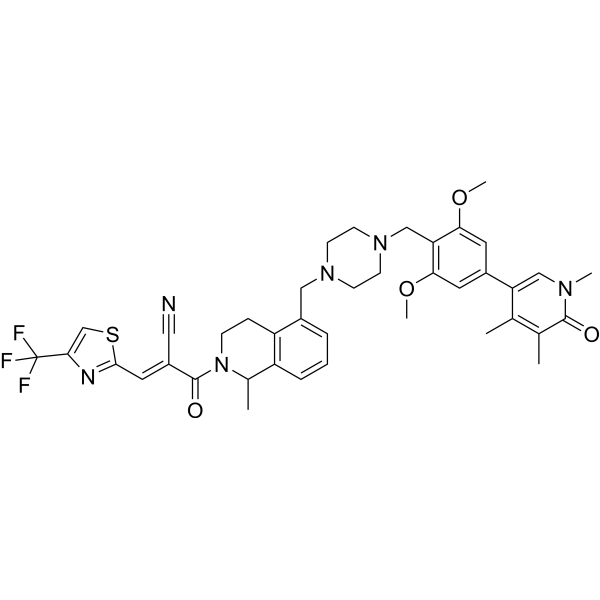
|
| DC67369 | AR Degrader-2 Featured |
AR Degrader-2 (Compound 2) is a molecular glue compound that induces targeted degradation of the androgen receptor (AR), demonstrating potent activity with a DC50 ranging from 0.3 to 0.5 μM in VCaP prostate cancer cells.
More description
|
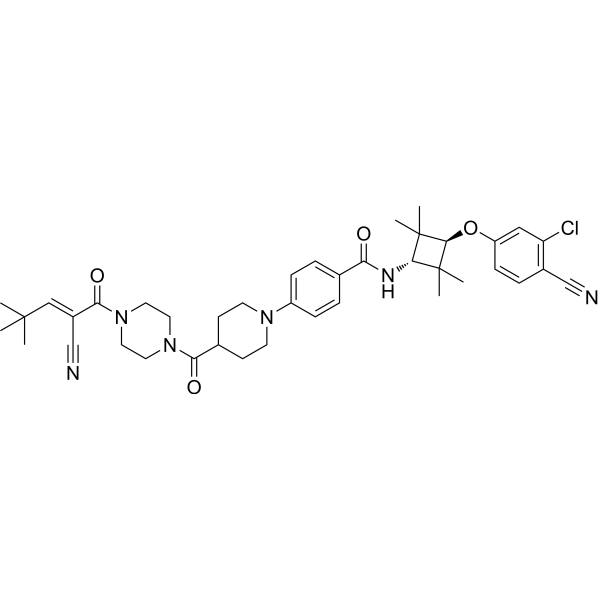
|
| DC67368 | rac-Lenalidomide-13C5 Featured |
rac-Lenalidomide-13C5 is a carbon-13 labeled racemic variant of lenalidomide, designed for tracer studies in pharmacokinetic and metabolic research.
More description
|
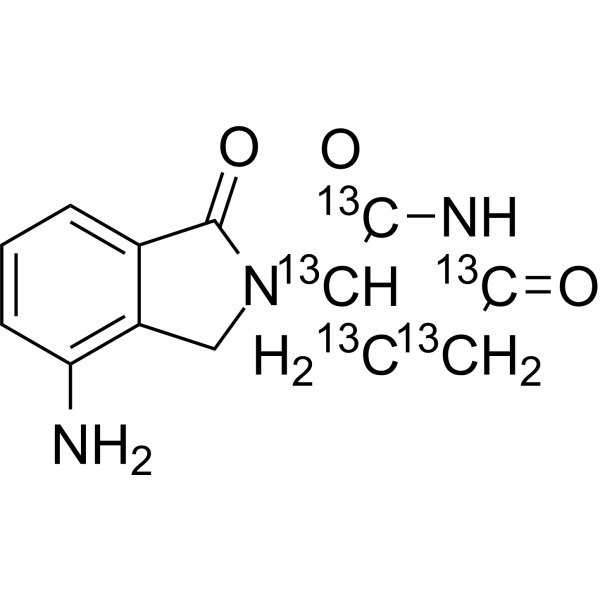
|
| DC67367 | Lenalidomide-13C5,15N Featured |
Lenalidomide-13C5,15N is an isotopically labeled analog of lenalidomide (HY-A0003; CC-5013), a thalidomide-derived molecular glue compound. This orally bioavailable immunomodulator functions through selective cereblon (CRBN) E3 ubiquitin ligase engagement, mediating targeted ubiquitination and proteasomal degradation of lymphoid transcription factors IKZF1 and IKZF3 via the CRBN-CRL4 complex. The compound demonstrates dual therapeutic activity by both suppressing proliferation of mature B-cell malignancies (including multiple myeloma) and enhancing T-cell immunostimulation through IL-2 induction.
More description
|
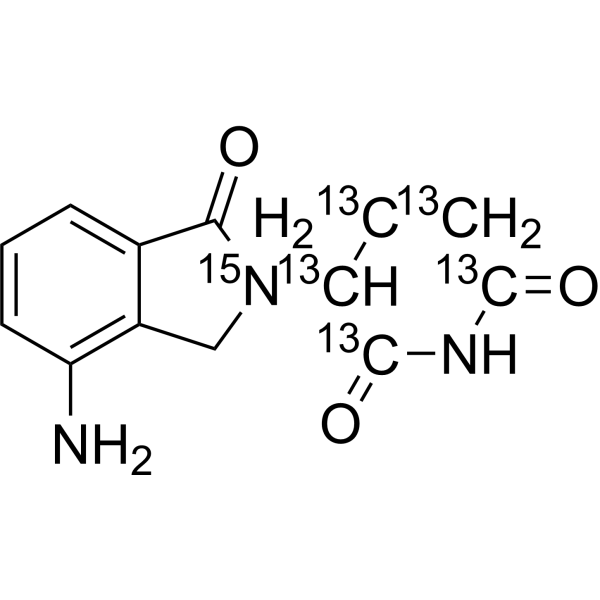
|
| DC67365 | 3-Indoleacetic acid-d4 Featured |
3-Indoleacetic acid-d4 (Indole-3-acetic acid-d4; 3-IAA-d4) is a deuterium-stabilized isotopologue of the endogenous auxin phytohormone 3-indoleacetic acid (HY-18569). As the predominant natural auxin, 3-IAA regulates fundamental plant growth processes, including cellular elongation and proliferation, when supplemented in plant tissue culture systems.
More description
|
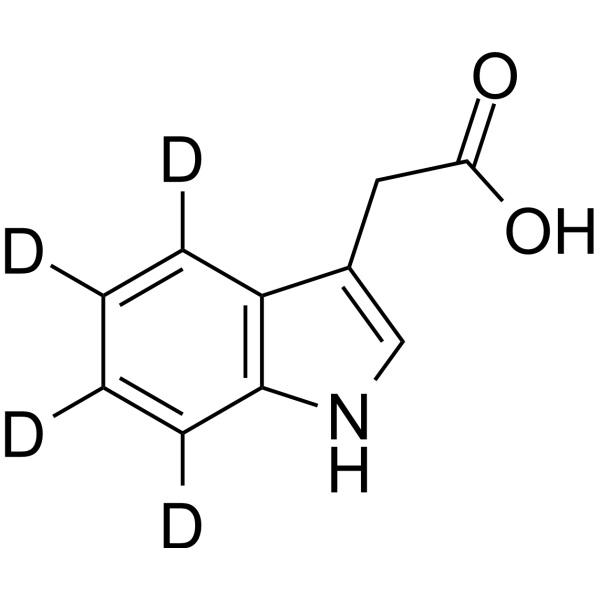
|
| DC67363 | Antitumor agent-100 hydrochloride Featured |
Antitumor agent-100 (compound A6) hydrochloride is an orally bioavailable molecular glue that selectively targets the PDE3A-SLFN12 complex (IC50 = 0.3 μM). By binding to the PDE3A catalytic pocket, it stabilizes SLFN12 interaction, subsequently inhibiting protein translation and triggering apoptotic cell death. This dual mechanism underlies its potent antitumor activity.
More description
|
.gif)
|
| DC73096 | CCT373567 Featured |
CCT373567 demonstrates potent and selective BCL6 inhibition, exhibiting an IC50 of 2.9 nM in biochemical TR-FRET assays and 25.9 nM in cellular NanoBRET assays. This cell-permeable compound maintains robust activity in physiological settings, highlighting its potential as a targeted therapeutic agent.
More description
|
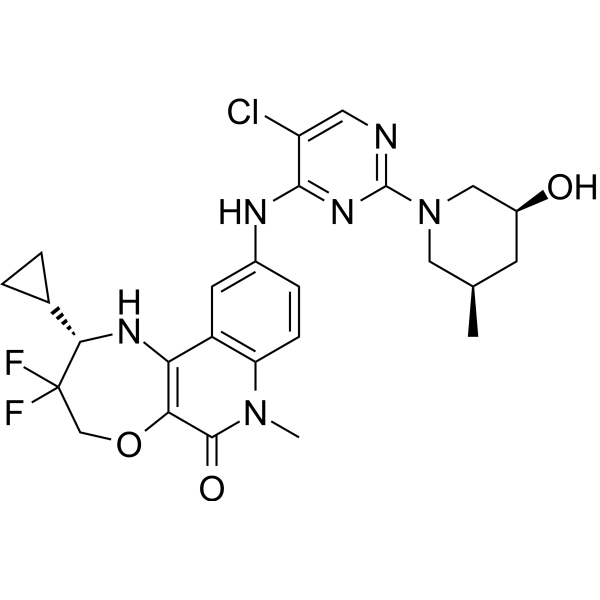
|
| DC67360 | GSPT1 degrader-4 Featured |
GSPT1 degrader-4 (compound 3) functions as a potent molecular glue targeting GSPT1, demonstrating a degradation concentration (DC50) of 25.4 nM. The compound exhibits strong anti-proliferative activity in CAL51 cells with an IC50 value of 39 nM.
More description
|
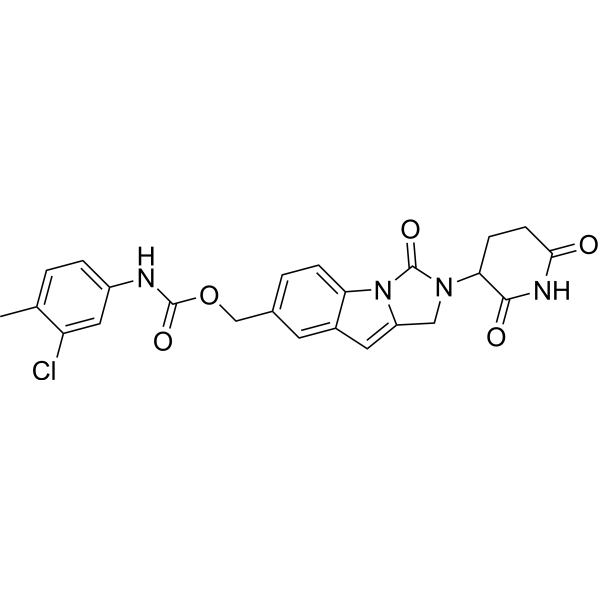
|
| DC67359 | FIZ1 degrader 1 Featured |
FIZ1 degrader 1 (compound 1) represents a novel IMiD-derived molecular glue compound engineered for targeted FIZ1 protein degradation.
More description
|
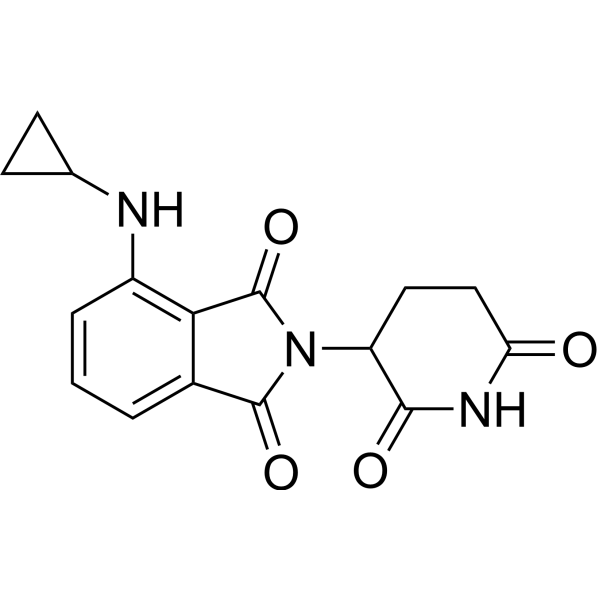
|
| DC67358 | BRD9 Degrader-4 Featured |
BRD9 Degrader-4 (BRD9c) is a highly potent bifunctional molecular glue compound that induces targeted degradation of BRD9, demonstrating exceptional activity with a DC50 value of 25 nM or lower. This degradative capability translates to significant anti-tumor efficacy, highlighting its potential as a therapeutic agent.
More description
|
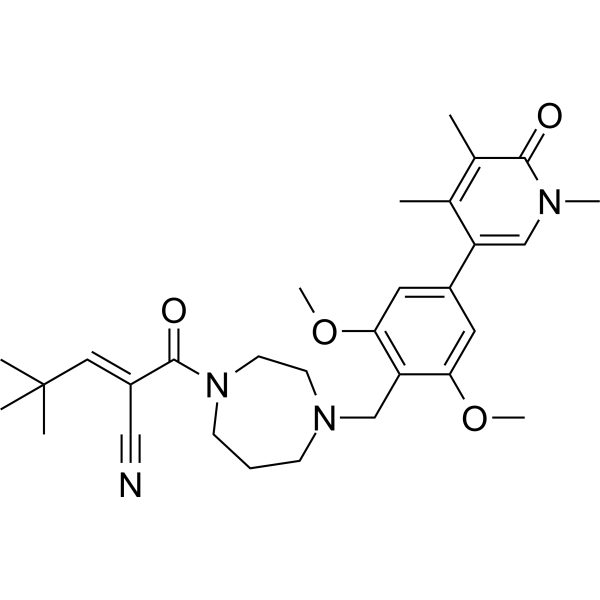
|
| DC31426 | Avadomide hydrochloride Featured |
Avadomide hydrochloride (CC-122 hydrochloride), the salt form of Avadomide (HY-100507), is an orally bioavailable cereblon-targeting agent that exerts potent antitumor and immunomodulatory effects. By modulating cereblon E3 ubiquitin ligase activity, this compound inhibits the NF-κB signaling pathway and induces G1 phase cell cycle arrest, ultimately triggering apoptosis in PDAC cancer cells.
More description
|
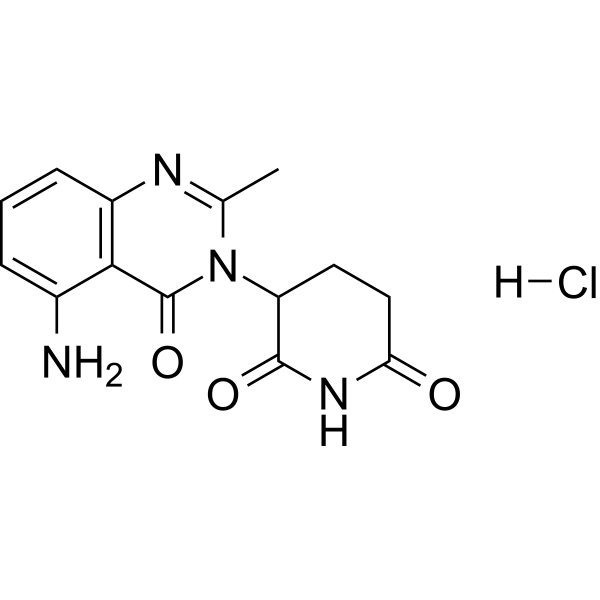
|
| DC67356 | IPS-06061 Featured |
IPS-06061 is an orally bioavailable molecular glue that mediates targeted degradation of KRAS G12D through formation of a CRBN-KRASG12D-IPS06061 ternary complex, demonstrating potent activity with a DC50 below 500 nM.
More description
|
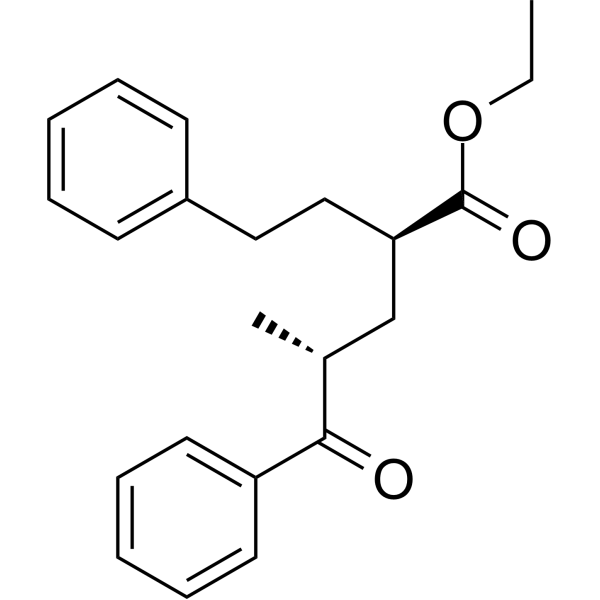
|
| DC67354 | Lenalidomide hydrochloride Featured |
Lenalidomide hydrochloride (CC-5013 hydrochloride), a thalidomide-derived molecular glue, functions as an orally bioavailable immunomodulatory agent. By binding to the ubiquitin E3 ligase cereblon (CRBN), it recruits the CRBN-CRL4 complex to induce selective ubiquitination and degradation of lymphoid transcription factors IKZF1 and IKZF3. This mechanism underlies its potent activity against mature B-cell malignancies, including multiple myeloma, while also stimulating IL-2 secretion from T cells.
More description
|
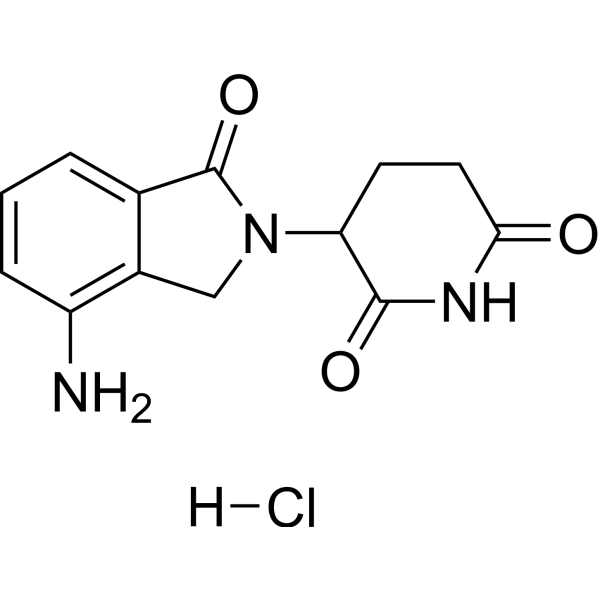
|
| DC28973 | (R)-Thalidomide Featured |
The R-enantiomer of thalidomide, (R)-(+)-thalidomide, exhibits sedative effects distinct from its racemic counterpart.
More description
|

|
| DC4115 | Cyclosporin A Featured |
Cyclosporin A (Cyclosporine A) is a potent immunosuppressive agent commonly administered after allogeneic organ transplants to suppress immune system activity and prevent rejection.
More description
|
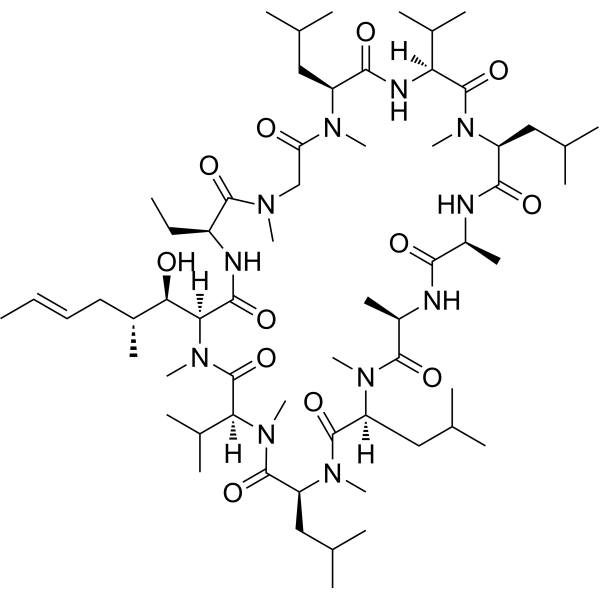
|
| DC60654 | CDO1 degrader-1 Featured |
CDO1 Degrader-1 (Compound 8) is a molecular glue that targets cysteine dioxygenase (CDO1) for degradation.
More description
|
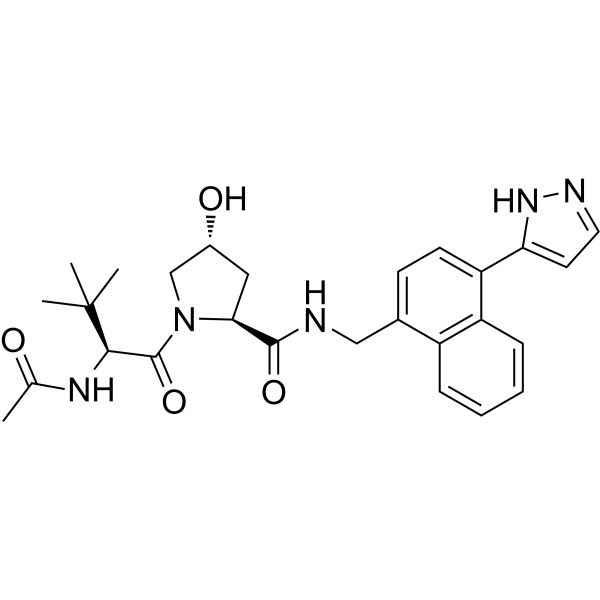
|
| DC67353 | HuR degrader 2 Featured |
HuR Degrader 2 (Compound 3) is a molecular glue that targets the RNA-binding protein HuR, degrading ~30% of HuR at 0.1 μM. It inhibits the proliferation of Colo-205 cancer cells with an IC50 ≤ 200 nM and exhibits high cereblon binding affinity, as evidenced by an HTRF ratio < 0.02.
More description
|
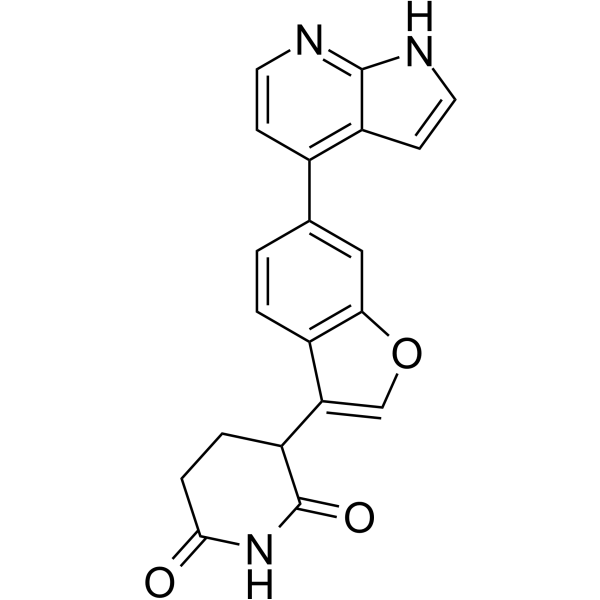
|
| DC36190 | Asukamycin Featured |
Asukamycin, a macrolide polyketide derived from Streptomyces nodosus subsp. asukaensis, exhibits dual antimicrobial and antitumor activities. This natural product demonstrates broad-spectrum antibiotic properties while selectively inhibiting tumor cell proliferation through caspase-8/3-mediated apoptosis induction.
More description
|
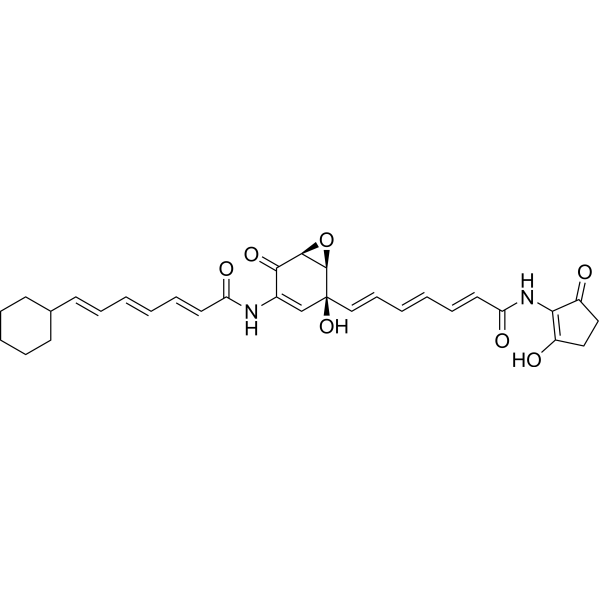
|
| DC70978 | Thalidomide-piperazine hydrochloride Featured |
Thalidomide-piperazine hydrochloride represents a chemically modified derivative of the prototypic immunomodulatory drug, featuring a piperazine moiety that enhances solubility while preserving the compound's unique biological properties.
More description
|
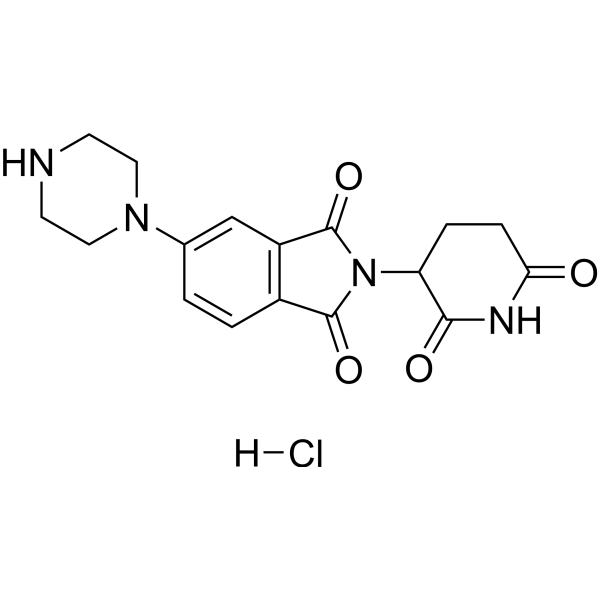
|
| DC67350 | Cyclosporin A acetate-d4 Featured |
Cyclosporin A acetate-d4 is a deuterium-enriched analog of the cyclic undecapeptide immunosuppressant, featuring four strategic deuterium substitutions that improve metabolic stability while preserving its dual mechanism of action.
More description
|
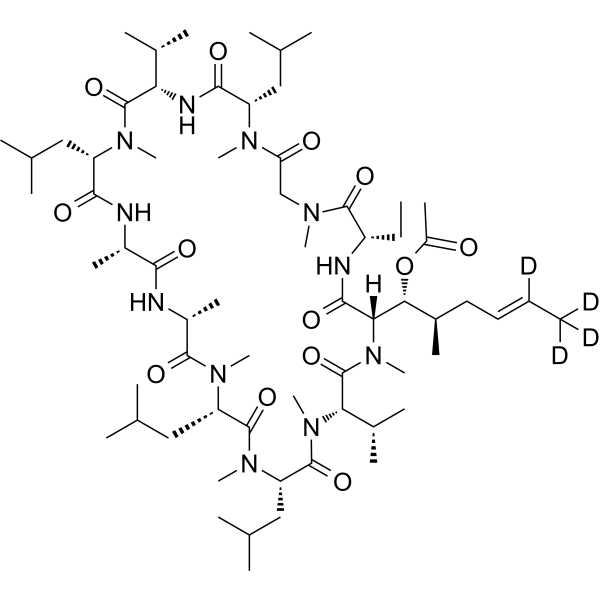
|
| DC67349 | Lenalidomide-d5 Featured |
Lenalidomide-d5 is a deuterium-enriched analog of the clinically validated immunomodulator lenalidomide (CC-5013), featuring five strategic deuterium substitutions that improve metabolic stability while preserving its molecular glue mechanism.
More description
|
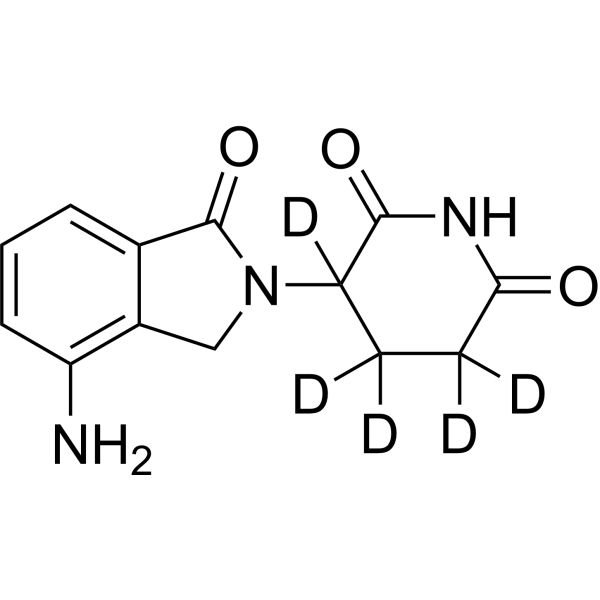
|
| DC67348 | Thalidomide-d4 Featured |
Thalidomide-d4 is a deuterium-enriched analog of the prototypic immunomodulatory drug thalidomide, featuring four strategically positioned deuterium substitutions. This isotopically labeled compound retains the parent molecule's ability to bind cereblon (CRBN) with high affinity (Kd ≈ 250 nM), thereby modulating the activity of the CUL4-RBX1-DDB1-CRBN E3 ubiquitin ligase complex.
More description
|
.gif)
|
| DC67346 | Jasmonic acid Featured |
Jasmonic acid ((-)-Jasmonic acid) is a plant growth regulator and a derivative of α-Linolenic acid (HY-N0728). Jasmonic acid signaling can also induce the MAP kinase cascade pathway, calcium channel, and many processes that interact with signaling molecules.
More description
|
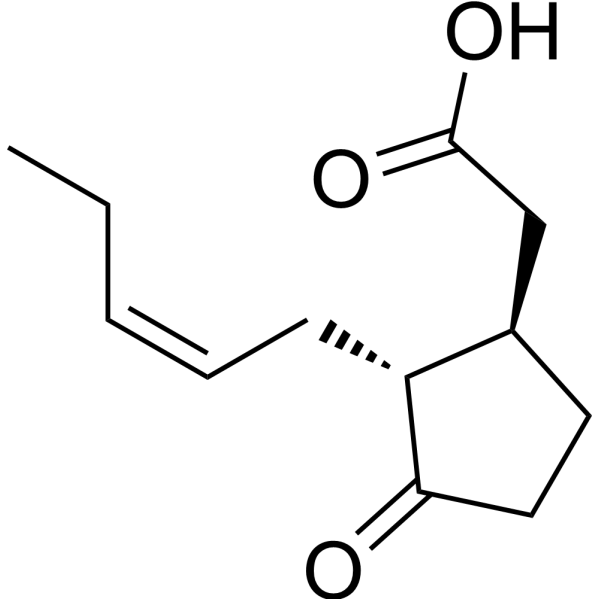
|
| DC47108 | Thalidomide-NH-CBP/p300 ligand 2 Featured |
Thalidomide-NH-CBP/p300 ligand 2 (P-007) represents a novel PROTAC architecture that simultaneously targets CBP and p300 for proteasomal degradation.
More description
|
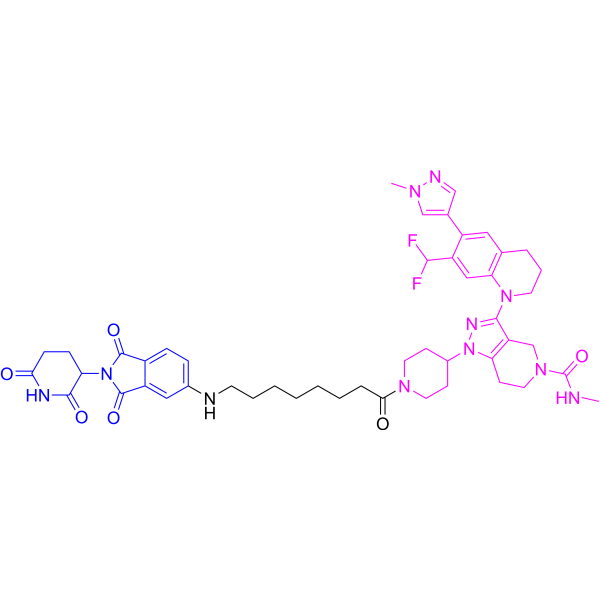
|
| DC67345 | MMH1-NR Featured |
MMH1-NR is a purpose-designed negative control compound for the DCAF16-based BRD4 degrader MMH1, featuring a strategically incorporated non-reactive ethyl group that abolishes degradation activity while maintaining structural similarity.
More description
|
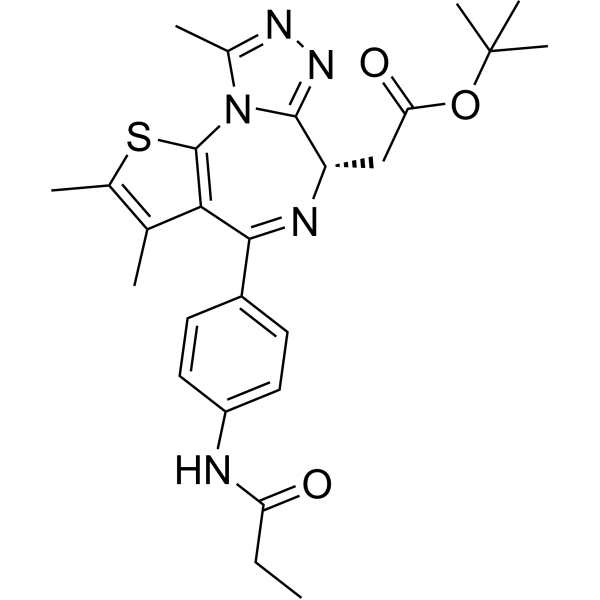
|
| DC67344 | Pomalidomide-d3 Featured |
Pomalidomide-d3 is a stable isotope-labeled analog of the clinically important immunomodulatory drug Pomalidomide, where three hydrogen atoms are replaced with deuterium.
More description
|
.gif)
|
| PR0049567 | BTX-7312 Featured |
BTX-7312 is a cereblon-based SOS1 bifunctional degrader and a molecular glue. BTX-7312 reduces downstream signaling markers pERK and pS6 and shows antiproliferative activity in various KRAS-mutated cells.
More description
|
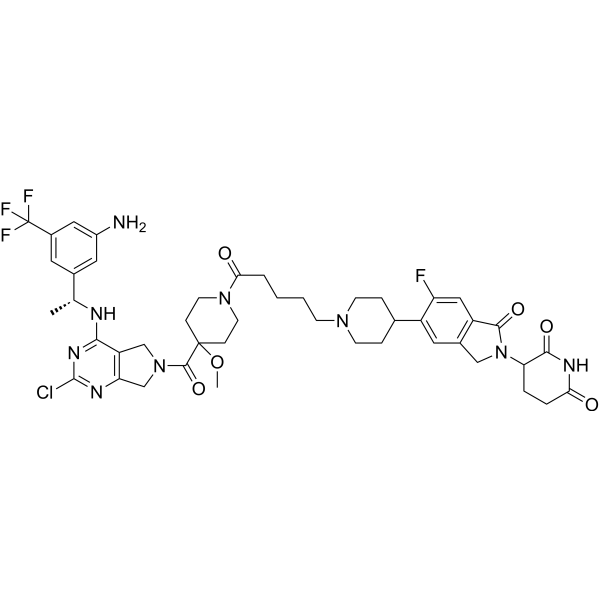
|